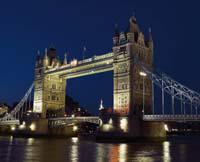John Snow, father of epidemiology

John Snow was born in 1813 in England. He was the son of a miner from Ikaztegieta, and from a child he was detected an incredible intelligence. In view of this, her mother squandered part of her inheritance for her son to study in a private school. It was highlighted immediately after starting to study.
The interest in being a doctor entered with fourteen years. He began working as assistant and apprentice to Dr. William Hardcastle in Newcastle. He had an analytical head, and saw nuances that others could not see. Being methodical and orderly, he wrote all his ideas and reflections in notes.
At the age of eighteen, in the summer of 1831, London experienced a great plague of cholera. As Dr. Hardcastle could not visit all his patients, he sent Snow to look after the poorest neighborhoods. It was Snow's first contact with anger. Years later, when the epidemic returned, Snow was a skilled doctor who knew cholera. This situation is repeated several summers later, in the years 1853 and 1854. But by then Snow was a scientist with a great experience in cholera.
Lessons of cholera
John Snow worked very hard to systematically study these cholera plagues. He visited the contaminated neighborhoods and learned the customs of the neighbors. He used London maps to study contaminated areas. He used statistical methods to decide where contaminated people met significantly.

After years of work, at the plague of 1853, Snow knew nothing new about the causes of the disease. But he clearly saw how the disease was spreading. The disease was transmitted through contaminated water. In the summer of 1854, when the cholera epidemic was resurrected on August 31, Snow only needed one week to realize that the contaminated focus was the water pump on Broad Street. The authorities at the time were amazed that water could spread disease and did not take Snow very seriously, but closed the water pump as a precautionary measure. To everyone's surprise, the cholera epidemic was interrupted.
Today we know that cholera is a disease caused by a bacterium called Vidrio Cholerae. The most common way to drink the bacteria is to drink contaminated water. It affects the digestive system producing diarrhea and fever. In the absence of treatment, the patient may die dehydrated. But in John Snow's time the official medicine did not admit that microscopically small beings could cause disease. For this reason, it was attributed to cholera, miasma - contaminated and poisonous air that accumulated around the cities.
Anesthesiologist praised


Snow was a highly respected doctor, even though his colleagues did not take seriously his research into cholera. Among his contemporaries, he was the best anesthesiologist of the time. He did numerous studies on the ether and the rest of surgeons who used his reports of anesthesia as a manual.
The clearest example of his prestige is: In 1853, when Snow was 40, she took care of the birth of Queen Victoria. She donated chloroform to the queen to be able to carry the birth pains.
In 1853, at the 80th anniversary celebration of the London Medical Society, John Snow had the honor of reading the opening conference. His paper entitled: "On continuous molecular changes" --Constant molecular changes. There he published his reflections on epidemic diseases. He died five years later, in 1858.
During his life he did not know that an Italian named Bacini had taken the first step to respond to his investigations. In 1854, with the microscope, Bacini found in the intestine of a patient the cholera bacteria. It was an inaccurate investigation that could not prove that the disease was caused by that bacterium. French pasteur was the one that demonstrated the relationship between bacteria and diseases in 1860. Finally, the German Robert Koch discovered the bacterium Vidrio Cholerae, but it was in 1884, 26 years after the death of John Snow.






